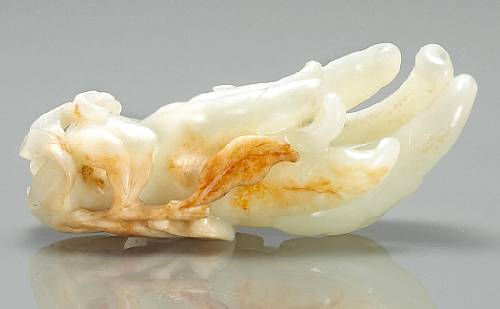
By Patrick Hunt –
People have known for millennia some of the healthy benefits of citrus fruit. Citrus medica, for example, more commonly called the citron, has been extolled for its associations with Buddhism, as seen in the above nephrite jade Buddha’s hand citron, albeit fairly modern, since it literally brought health and wellbeing. The Citrus medica var. sarcodactylus (meaning “flesh-fingered” in Greek since it resembles a hand) has been used for millennia to perfume rooms and also given as an offering at Buddhist temples. This fragrant citrus also resembles the human hand praying to Buddha. The citron may thus be one of the first citrus cultivars due to its health connections. In early Asia it may have also been known as protection against scurvy along with other related properties such as helping to retain teeth; although this wasn’t understood in the West until the past few centuries. Not only high in ascorbic acid, Vitamin C, citrus fruit is also rich in folate and potassium, among other beneficial compounds and minerals. Since humans, like other higher primates, are missing the enzyme L-gulonolactone oxidase, we cannot manufacture our own Vitamin C and must obtain it by diet.
Earliest cultivation of citrus goes back at least 2500 years to Asia. Although quite late as a Ming Dynasty work, this Chinese “still life” painting on silk below at the Freer-Sackler Gallery of the Smithsonian Museum shows a pair of citrus fruits at the lower left of the blue bowl. The bumpy skin is a strong clue for a citron along with its color, distinctive leaves and thorn, and its yellow is presumably faded in the painting.
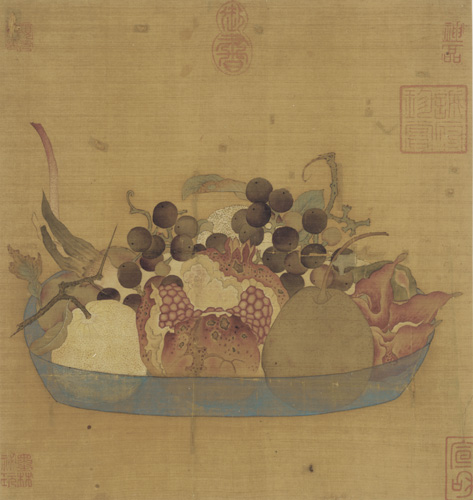
According to some, the oldest attested reference to citrus (lemon and orange) occurs in Sanskrit in the sacred text Vajasineyi Samhita before 800 BCE, where it is named as jambhila [1] although not all agree this citrus reference is plausible. One of the earliest attested references to citrus, however, is from the Chinese poet Ch’u Yuan (Qu Yuan) in the 4th century BCE, who often mourned the loss of virtue in the state. He praised the orange tree as a possible allegory of ideal kingship rarely realized:
“Orange tree, nurtured by nature,
born to be adaptable to the soil and water here…
Your leaves green and flowers clean,
so delightful is the riotous profusion.
even though between layers of leaves there are thorns,
the fruits are so beautiful and round…” [2]
The variety of citrus cultivated for a long time in China by the medieval period is attested by Han Yen-chih’s Chü lu, circa 1178 A.D. where twenty-seven varieties of sweet, sour, and mandarin oranges are described in detail.[3] The sweet small Mandarin citrus also easily tells its Chinese origin in its name. Citrus fruit was gradually introduced westward by land and sea from China, India and Southeast Asia into the Median kingdom and Persian Empire by the sixth century BCE and diffused from there to the Mediterranean via Alexandrian Hellenism in the fourth century BCE. It was likely planted in Persia since the Greeks knew it as “Median fruit” according to Theophrastus in Historia Plantarum 4.4.3. [4] It would not be surprising then to expect some form of citrus fruit in Pasargadae in the Garden of Cyrus, since he was of mixed Median and Persian descent as the first emperor of Achaemenid Persia.[5] Jewish tradition also maintains the citron was brought back from Babylonian captivity and known in Hebrew as etrog; a Jewish coin from the Maccabean Era about 136 BCE shows a citrus fruit. It became an important Succoth fruit in Jewish tabernacle and temple ritual [6] The Greek word kedros was the source of the Latin citrus. The lemon or Citron was apparently known in Greece from Theophrastus and later in Rome by Dioscorides in his De Materia Medica in the first century CE where he names it as “kedromela which the Romans call citria.” [7]
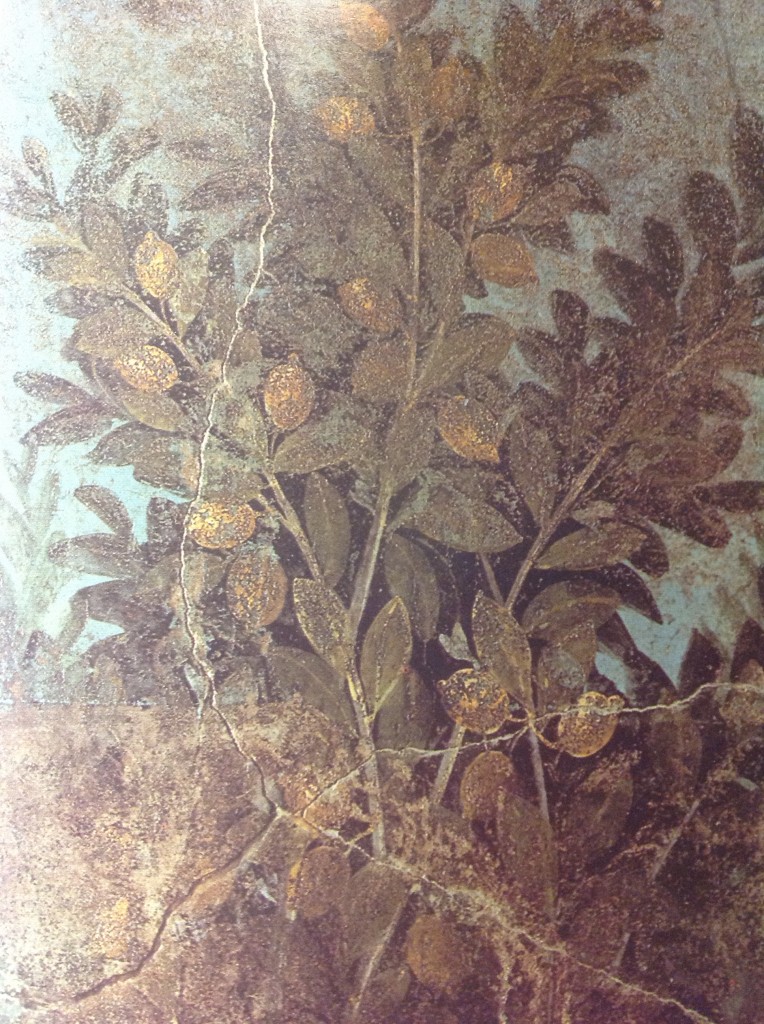
Another contemporary Roman source for citrus is Pliny, who variously calls it citrus, citrea or malum citreum in his Natural History (XII.15-6, XV.47, XVI.107, XVII.64 & 23.105); in the last reference here Pliny maintains citrus has power as an antidode to poison when taken in wine.[8] The lemon was also known to Rome from its plantings in Pompeii. Paleobotany has now proven this not only visually interpreted from wallpaintings like the House of the Fruit Orchard (see photo above) and mosaics but also from carbonized wood from the Villa Poppaea at nearby Oplontis [9].
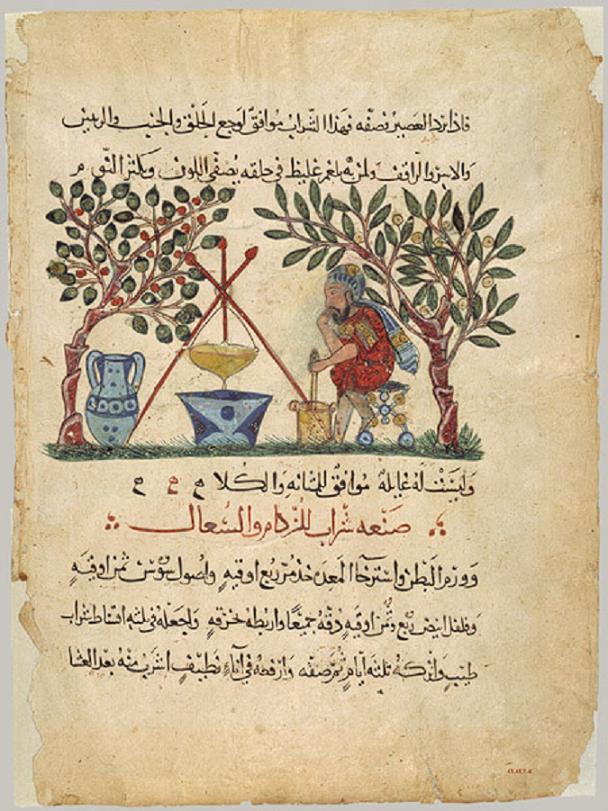
Early Christian medical knowledge seems to have mostly forgotten much of Dioscorides while maintaining some knowledge of Galen. [10] The Roman citrus was not so common in the early Christian West when affluence, like literacy, fell off fairly quickly. Health took a plunge too when urban aqueducts were not maintained and the rivers of ruined cities became virtual cesspools. No wonder citrus mostly disappeared from Mediterranean Europe for centuries and it was left to enterprising Arabs who treasured fountains and gardens made all the more precious by their arid homelands to fill in the gaps.
Hybridized citrus family members were again brought out of the Near East in a second wave with the eighth century CE spread of Islam. North African migrant farmers and botanical scientists brought citrus to Sicily for the emirs’ gardens and to Spain (Al-Andalus) where the glories of the Alhambra were sweetened by citrus gardens. The Tangerine also came from Tangiers, and the famous Valencia and Seville orange varieties evidence long cultivation there by Arab botanists. The Arabic extant copy of Dioscorides’ De Materia Medica (with copious experimental botanical annotations in Arabic like the Vienna Byzantine Greek version that was in the Istanbul court of Suleyman the Magnificent but in the text rather than as marginalia) has an image depicted above that may show honey production with a possible citrus tree on the right judging by its leaves and yellow fruit color (see above photo). [11]
In Sicily, the brilliant Arab geographer Al-Idrisi wrote his astonishing compendium atlas, Tabula Rogeriana in 1154 for King Roger II in Palermo, telling the king, among countless other cultural, floral and faunal details, about citrus trees he had witnessed elsewhere. The increasing fragrance of thousands of lemon trees – some planted for earlier emirs – wafted through the valley below Palermo’s Palazzo Normanni, well-watered by the qanat aqueduct system (Arabic etymological source for our word “canal”) that flowed from the surrounding mountains. Vestiges of these old underground aqueducts can still be seen in the garden of the red-domed church of San Giovanni degli Eremiti designed by Islamic architects when multicultural Palermo was the richest, most civilized city of Europe, as even later praised by Boccaccio.
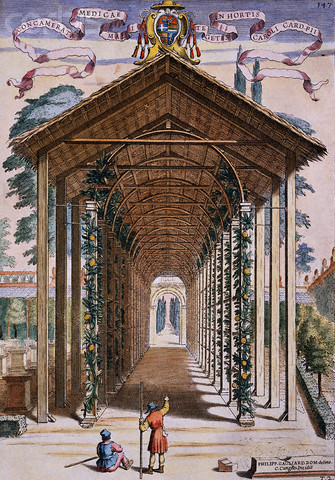
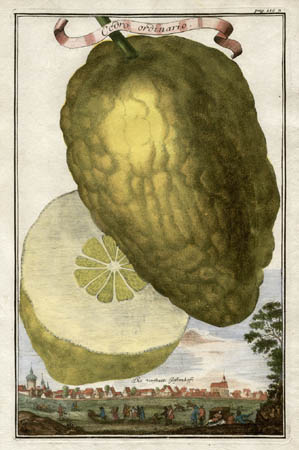
After its popularization in the Near East via the riches of Ottoman Turkey where Hapsburg diplomats began to praise its virtues, citrus was soon imported from both Spain and Istanbul at the end of the 15th century to Vienna for the royal gardens and then into the rest of Europe. Citrus groves spread again in Italy where they flourished in the mild climate along Lake Garda and the Brenta and Ligurian coasts.[12] Citrus was especially prized in the 17th century by Dutch botanists whose botanical gardens at Leiden and Amsterdam brought the exotic fruit to the attention of the wealthy. Orangeries – built with many windows to let sun in but keep frost out for protecting the trees from Northern winter damage – soon sprang up in nearly every royal palace and garden once the health virtues of citrus became better known. A Scottish surgeon in the Royal Navy and Fellow of the Royal Society, James Lind, proved citrus could treat scurvy while he was the naval surgeon for the HMS Salisbury in 1747 and prescribed it for long sea voyages in his 1753 Treatise of the Scurvy. Lind (1736-1812) was also the poet Percy Shelley’s science tutor at Eton College and was immortalized in a Shelley poem as the wise character Zonaras, teacher of Prince Athanasein.[13]
In some urban landscapes where old Northern European cities have spread out to former rural areas, like in Amsterdam’s Hortus Botanicus (founded in 1637) that I visited this past April, these Orangeries remind us how quickly horticultural science embraced citrus. Nearly every public garden appears to have an Orangerie and some like the Royal Botanical Garden at Kew outside London are wonderful places to soak up sunshine even when the outside air is brisk.
Now citrus trees, however far-flung and long their history, are valuable additions to Mediterranean climate gardens, especially where their small aromatic flowers fill the air with fragrance and provide bountiful fruit, in some cases year-round like the Meyer lemon, along with vital health. Here in Northern California we are extremely fortunate when our gardens are blessed to have orange, tangerine, lime, blood orange, Meyer Lemon and Eureka lemon trees. I planted some of each since 1994 and often eat a sweet Meyer lemon along with its rind. Enjoying fresh-squeezed citrus juice in every season makes one feel like royalty a few centuries past, especially when we rarely have to buy processed orange juice. The freshening qualities of lemons in bowls around the house seem to exhale health and wellbeing, perhaps explaining how the Buddha hand citron was venerated long ago. Some of my Stanford undergraduates on study abroad in a Moscow winter only a decade ago told me that fresh oranges were so scarce as to be almost worth their weight in gold. Equally telling, early German travelers before the mid-19th century who made the Grand Tour to Sicily were not believed when they returned home to regale their compatriots with fantastic tales of lemons blooming and delicious citrus fruit ripening in Taormina during the winter and spring under snow-capped Mt. Etna. I found this to be true this past March in Taormina like those incredulous Berlin travelers, some of whose journalists won wagers on such facts. I also know it because my own home citrus garden is equally a healthy treasure with an exotic past. At the wintertime solstice around Hannukah or Christmas growing up, our mother would carefully cut and prepare citrus peels strips – lemon, orange, grapefruit – rolled lightly in sugar, a condiment called succade, its name derived from Succoth, the Jewish Festival of Booths.[14] We loved our citrus rind candy without knowing how healthy it was for years, and now our family of five brothers and our wives make it again for our children. Some human family traditions are better than others, and this respect for citrus is one we should keep.
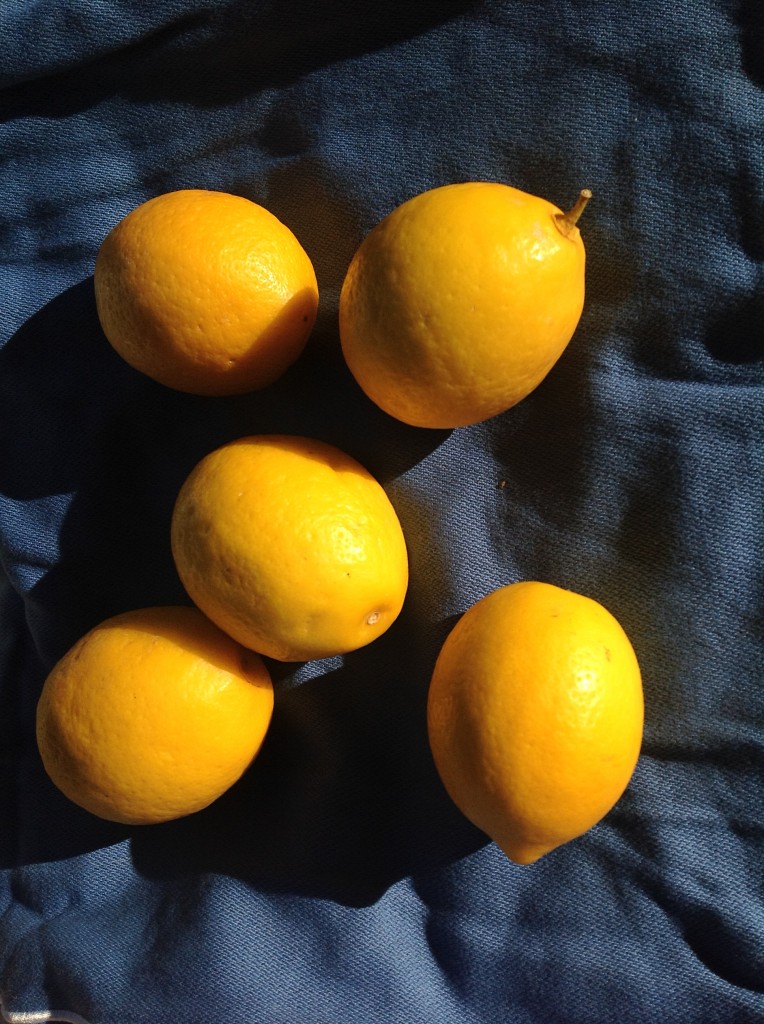
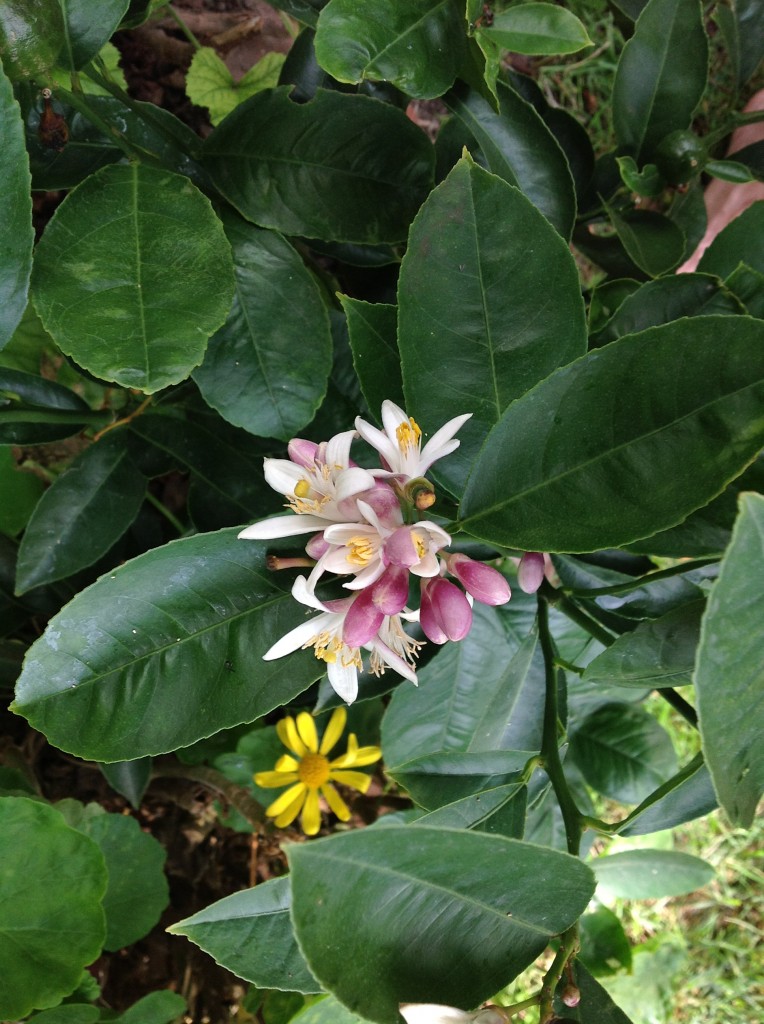
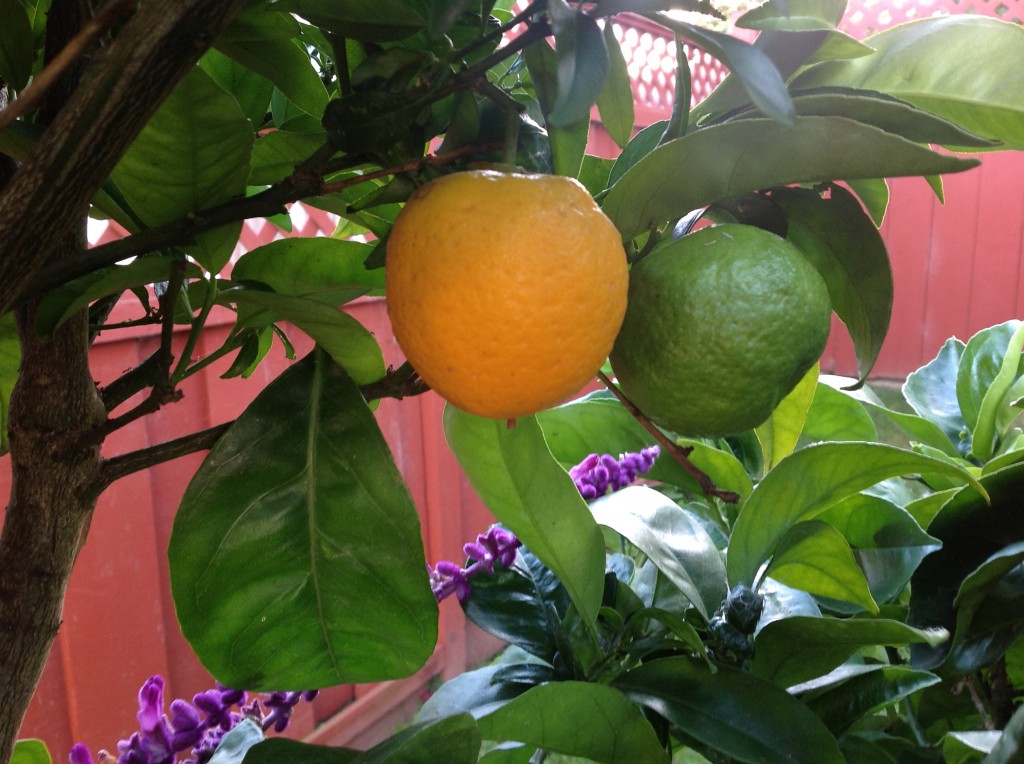
Notes:
[1] Rainer Scora. “On the Origin and History of Citrus IX.” Bulletin of the Torrey Botanical Club 102.6 (1975) 369-75, esp. 369.
[2] estimated to live between 343-278 BCE, excerpted from “Ju Song” in the Warring States Period, see The Songs of the South: An Ancient Chinese Anthology of Poems by Qu Yuan and other Poets, tr. David Hawkes. London and New York: Penguin, 1985, 178 ff.
[3] translated into English in by Michael J. Hagerty. Monograph on the Oranges of Wên-chou, Chekiang. Leiden: E.J. Brill, 1923. See Herbert John Webber. History and Development of the Citrus Industry. Revised by Walter Reuther and Harry W. Lawton. Berkeley: University of California Press, 1943, ch. 1, 1-3.
[4] “…reports of Greek botanists who accompanied Alexander on his campaigns establish that it was well climatized in that area by the fourth century BC…” from Alfred C. Andrews. “Acclimatization of Citrus Fruits in the Mediterranean Region.” Journal of Agricultural History 35.1 (1961) 35-46, esp. 36 where he mentions Cyrus. Andrews also disputes botanical historian S. Tolkowski (Hesperides, 1938) as finding evidence of citrus in Assyria with certainty and even shares claims of dubious archaeological finds of citrus seeds – citron? – in the Sumerian city of Nippur from the Third Millennium BCE, but this Sumerian source is unattested elsewhere and highly problematic, as Andrews points out.
[5] Pliny’s Natural History is strongly influenced by Theophrastus. His nephew Pliny the Younger also advocates growing small lemon trees in potted ceramic containers with bottom holes for drainage, mobile enough to be brought inside or moved to sunnier walls. See Anne Jennings. Roman Gardens.(Historic Gardens) English Heritage, 2005, 47 ff.
[6] Pierre Laszlo. Citrus: A History. Chicago: University of Chicago, 2007, 13
[7] this may be either citron or lemon, but most likely citron (Citrus medica). See Helmut Baumann. The Greek Plant World: in Myth Art and Literature, Portland: OR: Timber Press, 1993 ed. [tr. W.T. & E.R. Stearn], 139, where discussion of Theophrastus’ description includes “evergreen furnished with thorns bearing inedible fruit with a highly scented skin”.
[8] whether seed or fruit is ambiguous. Also see Annamaria Ciarallo. Gardens of Pompeii. Rome: L’Erma di Bretschneider, 2000, 15, fig. 17 with photo of lemon (Citrus limon) in Pompeian wallpainting (and above photo).
[9] Wilhelmina F. Jashemski and F. G. Meyer. The Natural History of Pompeii. Cambridge: Cambridge University Press, 2002, 101-3, also see 195, 203 & 251.
[10] Vivian Nuttall. “From Galen to Alexander, Aspects of Medicine and medical Practice in late Antiquity. Dumbarton Oaks Papers 38 (Symposium on Byzantine Medicine) 1984, 1-14.
[11] Ambiguous because the yellow fruit may have relict flower sepals – not found on citrus – or are dramatized lemon “nipple” ends. The Arabic page is mostly about honey production.
[12] E. Nicolosi, “Origin and Taxonomy” in I. A. Khan, ed., Citrus Genetics, Breeding and Biotechnology. Oxfordshire CAB International, 2007, 19-44, esp. 30 & ff.
[13] Stephen Brown. Scurvy: How a Surgeon, a Mariner and a Gentleman Solved the Greatest Medical Mystery of the Age of Sail. New York: St. Martin’s Press, 2005 repr., esp. 96 & ff; also see John Addington Symonds. Shelley. New York: Harper Bros, 1879, ch. 2, 17 & ff.
[14] Laszlo, 13.